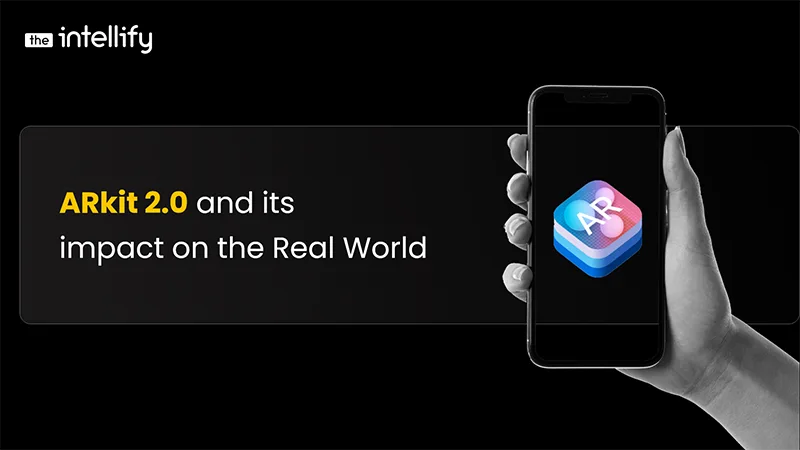ARKit 2.0 and its Impact on Real-World AR Experiences
What really defines an AR experience is the ability to create and track correspondence between the real-world space and the user. AR creates an illusion that a virtual object or content is an integral part of the real world.
In all AR scenarios, ARKit 2.0 creates multi-device interactions, enabling two or more users to engage in shared augmented environments. This robust improvement solidifies ARKit 2.0 as one of the best AR tools for mobile devices due to its advanced tracking capabilities on vertical and non-flat surfaces, delivering a seamless experience.
ARKit 2.0 primarily focuses on shared AR experiences, allowing users to engage collaboratively in real time. Additionally, it recognizes device orientation, creating dynamic AR experiences that leverage real-time data for improved accuracy.
Enhanced Interaction Capabilities
ARKit 2.0 incorporates a unique communication system that allows people to experience and share AR scenarios together, making it a significant leap forward for social and collaborative applications. This also gives gaming a new look, pushing interactivity and user responsiveness to new levels.
For example:
- The ARKit Flooring App uses advanced measurement technology to provide accurate dimensions of an object while realistically reflecting the environment on virtual surfaces.
- The Wall Texturing App simulates environment textures, allowing users to preview various wall designs using realistic image-based textures on a surface.
- The Real Estate AR Portal simulates interior and exterior real estate plans, allowing potential buyers or developers to visualize spaces and designs interactively before construction begins. It provides a realistic look at what future projects could entail.
ARKit 2.0 combines motion tracking, camera capture, advanced scene processing, and simultaneous engagement to optimize user experiences. These features simplify development while enriching interactions in augmented reality, making it an essential tool in mobile AR development.
High-Impact Applications and New Features
In addition to shared experiences, ARKit 2.0 introduces:
- Object Detection and 3D Recognition: Supporting 3D object recognition, ARKit 2.0 caters to industries like retail and interior design, ensuring immersive product visualization for consumers.
- Enhanced Face Tracking: Developers can leverage advanced face-tracking capabilities to capture detailed facial expressions, ideal for AR gaming and social applications.
- Persistent AR Experiences: ARKit 2.0 retains the positions of virtual objects even after the app closes, ensuring consistent experiences upon reopening, making it one of the most reliable AR tools available.
Expanding Possibilities in AR Development
Through these advancements, ARKit 2.0 is transforming mobile AR by blending motion tracking, surface detection, and interactive scenes. ARKit 2.0 enables precise, real-world measurements and spatial mapping to deliver a customized and intuitive experience for those in real estate, gaming, architecture, and retail. Its impact on augmented reality applications is pivotal, especially for developers looking to implement highly interactive AR environments.
Conclusion
ARKit 2.0 is a powerful tool that redefines mobile AR experiences by combining motion tracking, surface detection, and real-time multi-user interaction. With features like 3D object recognition, persistent AR experiences, and enhanced face tracking, it offers immersive possibilities for industries such as gaming, retail, and real estate. As AR development evolves, ARKit 2.0 ensures innovative, precise, and interactive environments that enhance user engagement.
Contact Us for more information on integrating AR into your business to explore how ARKit 2.0 can transform your applications.


